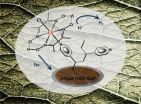(Press-News.org) NEW YORK, NY (March 7, 2014) — Columbia University Medical Center (CUMC) researchers have found that decision-making accuracy can be improved by postponing the onset of a decision by a mere fraction of a second. The results could further our understanding of neuropsychiatric conditions characterized by abnormalities in cognitive function and lead to new training strategies to improve decision-making in high-stake environments. The study was published in the March 5 online issue of the journal PLoS One.
"Decision making isn't always easy, and sometimes we make errors on seemingly trivial tasks, especially if multiple sources of information compete for our attention," said first author Tobias Teichert, PhD, a postdoctoral research scientist in neuroscience at CUMC at the time of the study and now an assistant professor of psychiatry at the University of Pittsburgh. "We have identified a novel mechanism that is surprisingly effective at improving response accuracy.
The mechanism requires that decision-makers do nothing—just briefly. "Postponing the onset of the decision process by as little as 50 to 100 milliseconds enables the brain to focus attention on the most relevant information and block out irrelevant distractors," said last author Jack Grinband, PhD, associate research scientist in the Taub Institute and assistant professor of clinical radiology (physics). "This way, rather than working longer or harder at making the decision, the brain simply postpones the decision onset to a more beneficial point in time."
In making decisions, the brain integrates many small pieces of potentially contradictory sensory information. "Imagine that you're coming up to a traffic light—the target—and need to decide whether the light is red or green," said Dr. Teichert. "There is typically little ambiguity, and you make the correct decision quickly, in a matter of tens of milliseconds."
The decision process itself, however, does not distinguish between relevant and irrelevant information. Hence, a task is made more difficult if irrelevant information—a distractor—interferes with the processing of the target. Distractors are present all the time; in this case, it might be in the form of traffic lights regulating traffic in other lanes. Though the brain is able to enhance relevant information and filter out distractions, these mechanisms take time. If the decision process starts while the brain is still processing irrelevant information, errors can occur.
Studies have shown that response accuracy can be improved by prolonging the decision process, to allow the brain time to collect more information. Because accuracy is increased at the cost of longer reaction times, this process is referred to as the "speed-accuracy trade-off." The researchers thought that a more effective way to reduce errors might be to delay the decision process so that it starts out with better information.
The research team conducted two experiments to test this hypothesis. In the first, subjects were shown what looked like a swarm of randomly moving dots (the target stimulus) on a computer monitor and were asked to judge whether the overall motion was to the left or right. A second and brighter set of moving dots (the distractor) appeared simultaneously in the same location, obscuring the motion of the target. When the distractor dots moved in the same direction as the target dots, subjects performed with near-perfect accuracy, but when the distractor dots moved in the opposite direction, the error rate increased. The subjects were asked to perform the task either as quickly or as accurately as possible; they were free to respond at any time after the onset of the stimulus.
The second experiment was similar to the first, except that the subjects also heard regular clicks, indicating when they had to respond. The time allowed for viewing the dots varied between 17 and 500 milliseconds. This condition simulates real-life situations, such as driving, where the time to respond is beyond the driver's control. "Manipulating how long the subject viewed the stimulus before responding allowed us to determine how quickly the brain is able to block out the distractors and focus on the target dots," said Dr. Grinband.
"In this situation, it takes about 120 milliseconds to shift attention from one stimulus (the bright distractors) to another (the darker targets)," said Dr. Grinband. "To our knowledge, that's something that no one has ever measured before."
The experiments also revealed that it's more beneficial to delay rather than prolong the decision process. The delay allows attention to be focused on the target stimulus and helps prevent irrelevant information from interfering with the decision process. "Basically, by delaying decision onset—simply by doing nothing—you are more likely to make a correct decision," said Dr. Teichert.
Finally, the results showed that decision onset is, to some extent, under cognitive control. "The subjects automatically used this mechanism to improve response accuracy," said Dr. Teichert. "However, we don't think that they were aware that they were doing so. The process seems to go on behind the scenes. We hope to devise training strategies to bring the mechanism under conscious control."
"This might be the first scientific study to justify procrastination," Dr. Teichert said. "On a more serious note, our study provides important insights into fundamental brain processes and yields clues as to what might be going wrong in diseases such as ADHD and schizophrenia. It also could lead to new training strategies to improve decision making in complex high-stakes environments, such as air traffic control towers and military combat."
INFORMATION:
The paper is titled, "Humans optimize decision-making by delaying decision onset." The other author is Vincent P. Ferrera, PhD, associate professor of neuroscience (in psychiatry) and a member of the Mortimer B. Zuckerman Mind Brain Behavior Institute at Columbia.
The authors declare no financial or other conflicts of interests.
The study was supported by grants from the German Research Foundation (DFG Te819/1-1) to TT and the National Institutes of Health (NIH-MH059244) to VPF.
The Taub Institute for Research on Alzheimer's Disease and the Aging Brain at Columbia University Medical Center is a multidisciplinary group that has forged links between researchers and clinicians to uncover the causes of Alzheimer's, Parkinson's, and other age-related brain diseases and to discover ways to prevent and cure these diseases. It has partnered with the Gertrude H. Sergievsky Center at Columbia University Medical Center, which was established by an endowment in 1977 to focus on diseases of the nervous system, and with the Departments of Pathology & Cell Biology and of Neurology to allow the seamless integration of genetic analysis, molecular and cellular studies, and clinical investigation to explore all phases of diseases of the nervous system. For more information, visit The Taub Institute at http://www.cumc.columbia.edu/dept/taub/.
Columbia University Medical Center provides international leadership in basic, preclinical, and clinical research; medical and health sciences education; and patient care. The medical center trains future leaders and includes the dedicated work of many physicians, scientists, public health professionals, dentists, and nurses at the College of Physicians and Surgeons, the Mailman School of Public Health, the College of Dental Medicine, the School of Nursing, the biomedical departments of the Graduate School of Arts and Sciences, and allied research centers and institutions. Columbia University Medical Center is home to the largest medical research enterprise in New York City and State and one of the largest faculty medical practices in the Northeast. For more information, visit cumc.columbia.edu or columbiadoctors.org.
Ever-so-slight delay improves decision-making accuracy
Findings could improve understanding of ADHD, schizophrenia, and other neuropsychiatric diseases
2014-03-07
ELSE PRESS RELEASES FROM THIS DATE:
Notre Dame chemists discover new class of antibiotics
2014-03-07
A team of University of Notre Dame researchers led by Mayland Chang and Shahriar Mobashery have discovered a new class of antibiotics to fight bacteria such as methicillin-resistant Staphylococcus aureus (MRSA) and other drug-resistant bacteria that threaten public health. Their research is published in the Journal of the American Chemical Society in an article titled "Discovery of a New Class of Non-beta-lactam Inhibitors of Penicillin-Binding Proteins with Gram-Positive Antibacterial Activity."
The new class, called oxadiazoles, was discovered in silico (by computer) ...
New theory on cause of endometriosis
2014-03-07
Changes to two previously unstudied genes are the centerpiece of a new theory regarding the cause and development of endometriosis, a chronic and painful disease affecting 1 in 10 women.
The discovery by Northwestern Medicine scientists suggests epigenetic modification, a process that enhances or disrupts how DNA is read, is an integral component of the disease and its progression. Matthew Dyson, research assistant professor of obstetrics and gynecology at Northwestern University Feinberg School of Medicine and and Serdar Bulun, MD, chair of obstetrics and gynecology ...
Bone turnover markers predict prostate cancer outcomes
2014-03-07
(SACRAMENTO, Calif.) —Biomarkers for bone formation and resorption predict outcomes for men with castration-resistant prostate cancer, a team of researchers from UC Davis and their collaborators have found. Their study, published online in the Journal of the National Cancer Institute, also found that the markers identified a small group of patients who responded to the investigational drug atrasentan. The markers' predictive ability could help clinicians match treatments with individual patients, track their effectiveness and affect clinical trial design.
Castration-resistant ...
Promising news for solar fuels from Berkeley Lab researchers at JCAP
2014-03-07
There's promising news from the front on efforts to produce fuels through artificial photosynthesis. A new study by Berkeley Lab researchers at the Joint Center for Artificial Photosynthesis (JCAP) shows that nearly 90-percent of the electrons generated by a hybrid material designed to store solar energy in hydrogen are being stored in the target hydrogen molecules.
Gary Moore, a chemist and principal investigator with Berkeley Lab's Physical Biosciences Division, led an efficiency analysis study of a unique photocathode material he and his research group have developed ...
Anti-psychotic medications offer new hope in the battle against glioblastoma
2014-03-07
Researchers at the University of California, San Diego School of Medicine have discovered that FDA-approved anti-psychotic drugs possess tumor-killing activity against the most aggressive form of primary brain cancer, glioblastoma. The finding was published in this week's online edition of Oncotarget.
The team of scientists, led by principal investigator, Clark C. Chen, MD, PhD, vice-chairman, UC San Diego, School of Medicine, division of neurosurgery, used a technology platform called shRNA to test how each gene in the human genome contributed to glioblastoma growth. ...
Agricultural fires across the Indochina landscape
2014-03-07
Agricultural fires are still burning in Indochina ten days after the last NASA web posting about the fires. This natural-color image, taken on March 07, 2014, by the Moderate Resolution Imaging Spectroradiometer, MODIS, aboard the Aqua satellite, shows a more comprehensive area of burning agricultural fires that stretch from Burma through to Laos and south throughout Thailand. Actively burning areas, detected by MODIS's thermal bands, are outlined in red.Fire is used in cropland areas for pest and weed control and to prepare fields for planting. Crop residue burning helps ...
NYU researchers find majority of Latinas are unaware of their risk of diabetes
2014-03-07
Approximately 5.5 million Latinas suffer from elevated fasting plasma glucose (FPG) and nearly 4 million of those women were never told by a healthcare provider they were at risk for diabetes, pre-diabetes, or were borderline for diabetes.
The study, "Latinas with Elevated Fasting Plasma Glucose: An Analysis Using NHANES 2009-2010 Data," led by Dr. Shiela M. Strauss, Associate Professor, New York University College of Nursing (NYUCN), points to the urgent need for alternate sites of opportunity for diabetes screenings. There is also a need for effective and culturally ...
Smartphones become 'eye-phones' with low-cost devices developed by Stanford
2014-03-07
STANFORD, Calif. — Researchers at the Stanford University School of Medicine have developed two inexpensive adapters that enable a smartphone to capture high-quality images of the front and back of the eye. The adapters make it easy for anyone with minimal training to take a picture of the eye and share it securely with other health practitioners or store it in the patient's electronic record.
"Think Instagram for the eye," said one of the developers, assistant professor of ophthalmology Robert Chang, MD.
The researchers see this technology as an opportunity to increase ...
For older drivers, study finds, 1 drink may be 1 too many
2014-03-07
GAINESVILLE, Fla. — You may have only had one glass of wine with dinner, but if you're 55 or older, that single serving may hit you hard enough to make you a dangerous driver.
So, baby boomers, what you suspected is true: you can't party like you used to.
Sara Jo Nixon, Ph.D., a professor in the departments of psychiatry and psychology at the University of Florida and doctoral candidate Alfredo Sklar tested how drinking legally non-intoxicating levels of alcohol affect the driving skills of two age groups: 36 people ages 25 to 35 and 36 people ages 55 to 70. They found ...
Software analyzes apps for malicious behavior
2014-03-07
This news release is available in German.
Last year at the end of July the Russian software company "Doctor Web" detected several malicious apps in the app store "Google Play". Downloaded on a smartphone, the malware installed — without the permission of the user — additional programs which sent expensive text messages to premium services. Although Doctor Web, according to its own statement, informed Google immediately, the malicious apps were still available for download for several days. Doctor Web estimates that in this way up to 25,000 smartphones were used ...
LAST 30 PRESS RELEASES:
Orthopedics can play critical role in identifying intimate partner violence
Worms as particle sweepers
Second spider-parasitic mite described in Brazil
January 2026 issues of APA journals feature new research on autism, pediatric anxiety, psychedelic therapy, suicide prevention and more
Private equity acquired more than 500 autism centers over the past decade, new study shows
New cervical cancer screening guidelines from the US Department of Health and Human Services
Estimated burden of COVID-19 illnesses, medical visits, hospitalizations, and deaths in the US from October 2022 to September 2024
Smartphone use during school hours by US youth
Food insecurity and adverse social conditions tied to increased risk of long COVID in children
Earliest, hottest galaxy cluster gas on record could change our cosmological models
Greenland’s Prudhoe Dome ice cap was completely gone only 7,000 years ago, first GreenDrill study finds
Scientific validity of blue zones longevity research confirmed
Injectable breast ‘implant’ offers alternative to traditional surgeries
Neuroscientists devise formulas to measure multilingualism
New prostate cancer trial seeks to reduce toxicity without sacrificing efficacy
Geometry shapes life
A CRISPR screen reveals many previously unrecognized genes required for brain development and a new neurodevelopmental disorder
Hot flush treatment has anti-breast cancer activity, study finds
Securing AI systems against growing cybersecurity threats
Longest observation of an active solar region
Why nail-biting, procrastination and other self-sabotaging behaviors are rooted in survival instincts
Regional variations in mechanical properties of porcine leptomeninges
Artificial empathy in therapy and healthcare: advancements in interpersonal interaction technologies
Why some brains switch gears more efficiently than others
UVA’s Jundong Li wins ICDM’S 2025 Tao Li Award for data mining, machine learning
UVA’s low-power, high-performance computer power player Mircea Stan earns National Academy of Inventors fellowship
Not playing by the rules: USU researcher explores filamentous algae dynamics in rivers
Do our body clocks influence our risk of dementia?
Anthropologists offer new evidence of bipedalism in long-debated fossil discovery
Safer receipt paper from wood
[Press-News.org] Ever-so-slight delay improves decision-making accuracyFindings could improve understanding of ADHD, schizophrenia, and other neuropsychiatric diseases



